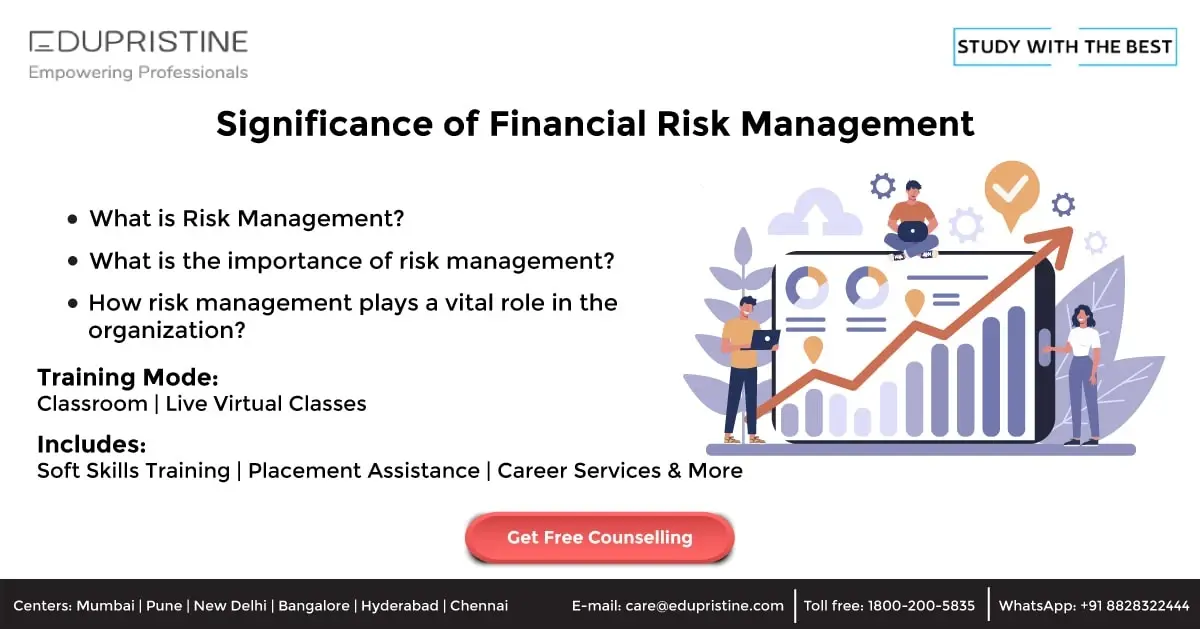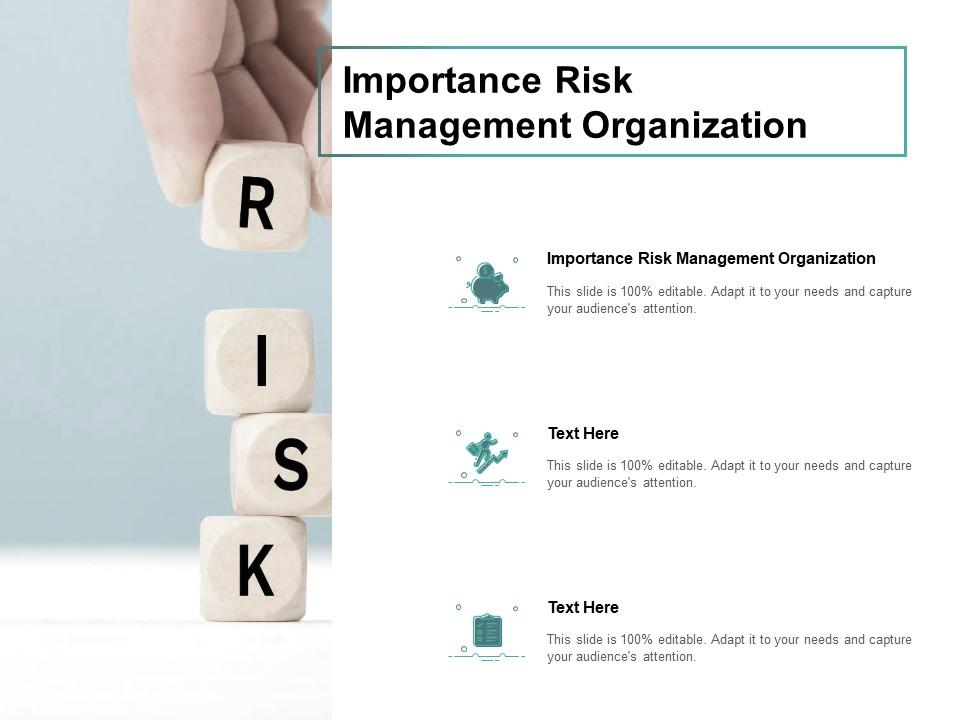Exploring the Increasing Importance of Risk Management in Corporate Strategy
Exploring the Increasing Importance of Risk Management in Corporate Strategy
Blog Article
Discovering the Significance of Risk Management for Effective Decision-Making Strategies
In the complex world of organization, Risk Management becomes a critical consider the decision-making process. The capability to recognize possible dangers and opportunities, and strategize as necessary, can spell the distinction between success and failing. With tools such as SWOT and PESTEL, companies are geared up to make informed selections, cultivating durability and flexibility in an ever-changing environment. Wondering exactly how this functions? Allow's unload the dynamics additionally.
Comprehending the Concept of Risk Management
Risk Management, a critical component in decision-making, is usually misinterpreted or oversimplified. Normally, it describes the identification, examination, and prioritization of threats to decrease, keep track of, and regulate the likelihood or impact of unfortunate events. However, it's not simply about preventing unfavorable outcomes, but additionally about recognizing possible opportunities. Risk Management involves disciplined and structured methods, using data and informative analyses. It needs a detailed understanding of the company's context, goals, and the prospective dangers that can combat them. From financial unpredictabilities, lawful liabilities, calculated Management errors, to crashes and all-natural catastrophes, it deals with various risks. Significantly, effective Risk Management is not stationary; it's a constant, forward-looking process that progresses with altering circumstances.
The Role of Risk Management in Decision-Making Processes
In the world of tactical preparation and company operations, Risk Management plays an important role in decision-making procedures. Risk Management hence ends up being a crucial tool in decision-making, assisting leaders to make educated choices based on a thorough understanding of the risks entailed. Risk Management offers as a crucial element in the decision-making procedures of any organization.

How Risk Management Enhances Strategic Preparation
In the context of tactical planning, Risk Management plays a crucial function. Initiating with the recognition of possible dangers, it even more expands to the application of Risk mitigation procedures. The role of Risk Management is not static but dynamic, as it requires consistent monitoring and adjusting of methods.
Recognizing Possible Threats

Applying Risk Mitigation
Having established the relevance of recognizing prospective threats, the following action is to discover Risk reduction. This process involves establishing and applying strategies to take care of recognized risks effectively. It is a critical aspect of tactical preparation as it improves decision-making by decreasing potential adverse end results. Risk mitigation strategies can vary from Risk avoidance, Risk transfer, to run the risk of reduction. Each technique needs to be customized to the specific Risk, considering its prospective influence and the company's Risk resistance. Moreover, efficient Risk mitigation requires a deep understanding of the Risk landscape and the prospective impact of each Risk. This understanding enables companies to focus on risks and allocate sources effectively, guaranteeing that one of the most significant dangers are resolved initially.
Tracking and Changing Methods
Though Risk mitigation is a vital step in critical preparation, continuous surveillance and modification of these strategies is equally important. This ongoing procedure allows organizations to recognize new risks and reassess existing ones, guaranteeing the applied strategies remain reliable in the ever-changing business setting. It also offers a possibility to assess the success of the Risk Management steps, permitting modifications to be made where required, further enhancing critical preparation. Reliable surveillance and adjustment call for making use of analytics and essential efficiency signs (KPIs) to measure effectiveness. These tools offer important data-driven understandings that can educate calculated decision-making. Consequently, tracking and changing Risk Management strategies is an essential component for improving an organization's strength and tactical planning.
Situation Studies: Successful Risk Management and Decision-Making
On the planet of business and finance, successful Risk Management and decision-making frequently serve as the go right here columns of prosperous business. One such entity is an international oil company that mitigated monetary loss by hedging against fluctuating oil costs. In another circumstances, a technology start-up thrived by determining and approving risky, high-reward techniques in an unpredictable market. An international financial institution, confronted with governing uncertainties, successfully browsed the situation with proactive Risk analysis and dynamic decision-making. These instances highlight the value of sharp Risk Management in decision-making processes. It is not the lack of Risk, yet the Management of it, that commonly separates effective companies from not successful ones. These instances highlight the crucial duty of Risk Management in calculated decision-making. importance of risk management.
Devices and Strategies for Efficient Risk Management
Navigating the intricate maze of Risk Management calls for the best set this post of devices and techniques. These tools, such as Risk signs up and warm maps, help in identifying and analyzing potential dangers. Strategies include both quantitative approaches, like level of sensitivity analysis, and qualitative techniques, such as SWOT analysis. These help in prioritizing dangers based upon their possible effect and chance. Risk action approaches, an essential part of Risk Management, entail approving, avoiding, transferring, or mitigating risks. Surveillance and controlling dangers, via normal audits and testimonials, make certain that the strategies stay reliable. With these strategies and tools, decision-makers can navigate the facility landscape of Risk Management, thereby helping with educated and reliable decision-making.
Future Patterns in Risk Management and Decision-Making Methods
As we check out the vast landscape of Risk Management, it ends up being evident that the strategies and tools utilized today will certainly remain to develop. Future patterns direct in the direction of an increased reliance on modern technology, with man-made intelligence and maker knowing playing significant duties. These innovations will certainly enable companies to predict prospective risks with greater accuracy and make more informed choices. In addition, there will certainly be a growing focus on resilience, not simply in managing threats however additionally in jumping back from adverse situations. Lastly, the idea of Risk culture, where every participant of a company realizes and entailed in Risk Management, will get more prestige. These patterns herald a more comprehensive and positive technique in the direction of Risk Management and decision-making.
Conclusion

Risk Management hence becomes a vital device in decision-making, helping leaders to make informed options based on a thorough understanding of the risks involved. Risk reduction approaches can vary from Risk evasion, Risk transfer, to run the risk of go decrease (importance of risk management). Efficient Risk reduction needs a deep understanding of the Risk landscape and the prospective influence of each Risk. Risk response strategies, a crucial element of Risk Management, involve approving, avoiding, moving, or mitigating threats. The concept of Risk culture, where every participant of a company is conscious and entailed in Risk Management, will certainly acquire extra prominence
Report this page